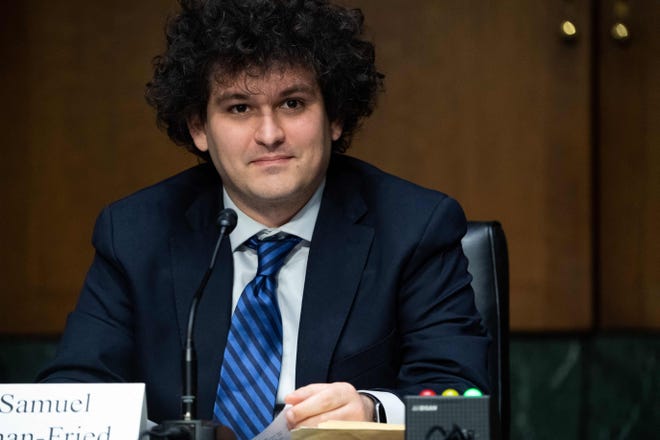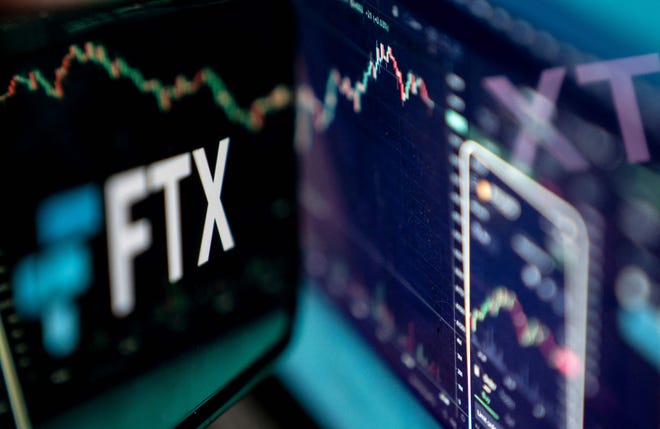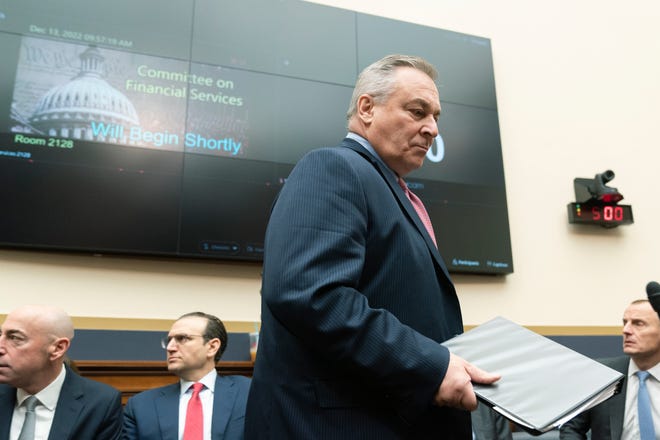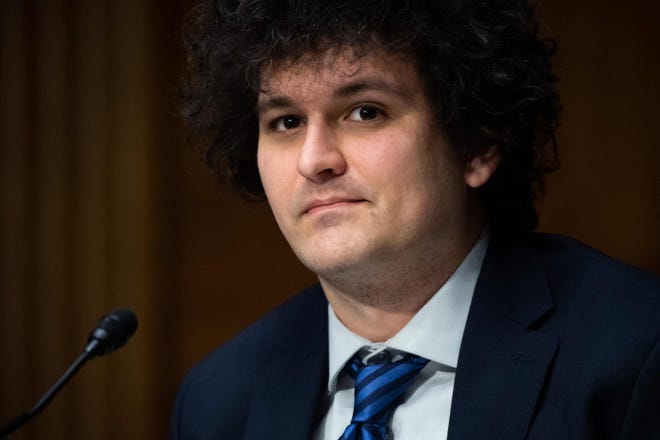
Earlier this year, Sam Bankman-Fried was a leader in the crypto industry sitting atop a $32 billion empire.
His cryptocurrency exchange, FTX, was one of the largest in the world and considered highly reputable. He found great success as its CEO and founder, and at one point had an estimated $26.5 billion in personal wealth.
That’s all gone, a reality that set in this week when the 30-year-old was arrested and charged with a list of federal crimes. Here’s what happened:
- SBF arrested and charged: Bankman-Fried, also known as SBF, was arrested Monday night, about a month after the collapse of his cryptocurrency exchange. He faces multiple federal charges, including conspiracy to commit wire fraud and campaign finance violations. Meanwhile, over $8 billion of FTX customer deposits are allegedly missing.
- He used investor money for other expenses, officials say: Filings from the U.S. Securities and Exchange Commission, Department of Justice and Commodity Futures Trading Commission paint a picture of a three-year scheme in which Bankman-Fried took billions from customers for personal use, including luxury real estate and political donations. It fell apart when the cryptocurrency market plummeted earlier this year, officials said.
“We allege that Sam Bankman-Fried built a house of cards on a foundation of deception while telling investors that it was one of the safest buildings in crypto,” SEC Chair Gary Gensler said in a Tuesday statement. “The alleged fraud committed by Mr. Bankman-Fried is a clarion call to crypto platforms that they need to come into compliance with our laws”

‘Old-fashioned embezzlement’:FTX CEO testifies to Congress; founder Sam Bankman-Fried arrested
How did the alleged scheme work?
FTX, founded by Bankman-Fried in 2019, is a platform that allowed customers to trade crypto assets. The company launched two years after Bankman-Fried co-founded Alameda Research, a trading firm specializing in crypto assets.
Investor money funneled to Alameda, officials say: The SEC accused Bankman-Fried of funneling FTX customer funds to Alameda, which were then used to fund speculative venture investments and loans to Bankman-Fried and other FTX executives.
- Money used for political contributions: Bankman-Fried allegedly used the commingled funds from Alameda to bankroll real estate purchases, including office space and luxury condominiums in The Bahamas, according to the SEC. The former CEO also allegedly spent the money on political contributions, per the SEC. He was one of the top political donators in this year’s election cycle, with most of his contributions going to Democratic political causes.
- SBF as borrower and lender: Bankman-Fried executed more than $1 billion from promissory notes for loans from Alameda. In two instances, he was both the borrower and lender, according to the SEC.
- SBF accused of misleading investors: The SEC also alleges that Bankman-Fried misled investors into believing that FTX was a safe crypto asset trading platform, allowing the company to raise more than $1.8 billion from investors since at least May 2019.
- $8 billion allegedly lost: The Commodity Futures Trading Commission alleges that FTX customers lost more than $8 billion in deposits from the alleged scam.

Bankman-Fried failed to disclose FTX’s exposure to Alameda or disclose that he was diverting FTX customer funds to Alameda, according to the SEC.
- “There was no meaningful distinction between FTX customer funds and Alameda’s own funds,” the SEC complaint reads. “Bankman-Fried thus gave Alameda carte blanche to use FTX customer assets for its own trading operations and for whatever other purposes Bankman-Fried saw fit.”
Sam Bankman-Fried arrested:FTX founder Sam Bankman-Fried arrested in Bahamas, indicted in New York, prosecutors say
How the scheme unraveled

Bankman-Fried’s alleged scheme began faltering in May of 2022, when the crypto market began to crash and lenders demanded Alameda repay billions of dollars of loans that the crypto hedge fund didn’t have.
- How Bankman-Fried reacted: Bankman-Fried diverted billions of additional FTX funds from customer assets to Alameda to maintain its lending relationships. Transferred funds from this time were also used for additional venture investments and loans to executives, according to the SEC.
- Investors pulled out: The walls started to crumble in November, after a CoinDesk article revealed Alameda had a balance sheet full of FTX’s exchange token, FTT. Binance, a competing cryptocurrency exchange, announced plans to sell its FTT in light of the findings. This triggered mass withdrawals from FTX. The market price of FTT crashed and FTX entered a liquidity crisis.
- FTX files for bankruptcy: FTX filed for bankruptcy on Nov. 11. Bankman-Fried resigned as CEO the same day.
- SBF goes on media blitz: In the weeks leading to his arrest, Bankman-Fried began a media tour in which he expressed regret over the mismanagement of the company but denied any intentional wrongdoing.
- More than 1 million people likely owed money: John J. Ray III, who took over as FTX’s CEO in November, said FTX lost at least $7 billion and his team was working to recover customer money. The company has said it will likely owe money to more than 1 million people.
- “This is really old-fashioned embezzlement,” Ray said at a Tuesday hearing. “This is just taking money from customers and using it for your own purpose.”

FTX:Congress set to hold hearing on Sam Bankman-Fried’s crypto exchange FTX Tuesday
The charges against Bankman-Fried
Federal prosecutors in the Southern District of New York on Tuesday unsealed an eight-count criminal indictment against Bankman-Fried.
- What the indictment alleges: The indictment accuses Bankman-Fried of conspiracy to commit wire fraud on customers and lenders and conspiracy to commit commodities fraud and securities fraud. Other charges include money laundering conspiracy and a conspiracy to defraud the U.S. government and violate campaign finance laws with contributions that exceeded giving limits.
- Alleged campaign finance violations: The indictment also accuses Bankman-Fried and others of using false names to make illegal campaign contributions to candidates for federal office, joint fundraising committees and independent expenditure committees.
- Officials want gains forfeited, repayment: The criminal indictment seeks forfeiture of all gains from the alleged conspiracy. The SEC court complaint wants Bankman-Fried to repay all ill-gotten gains from the alleged scheme as well as civil monetary penalties.
- Potential actions against SBF: The SEC court complaint also seeks an order barring Bankman-Fried from acting as a company officer or director, along with an order barring him from issuing, offering or selling any securities that are not within his own personal accounts.
- Bankman-Fried’s attorney ‘reviewing the charges’: A statement from Mark Cohen, Bankman-Fried’s attorney, said he is “reviewing the charges with his legal team and considering all of his legal options.”

You can follow USA TODAY reporter Bailey Schulz on Twitter @bailey_schulz and subscribe to our free Daily Money newsletter here for personal finance tips and business news every Monday through Friday.






